Our blogs

In the ever-evolving landscape of healthcare, the demand for more tailored and compassionate approaches to care is becoming increasingly evident. Our focus, therefore, shifts towards innovative disability support solutions that not only address the unique needs of each individual but also elevate the standard of care delivered. This importance is reflected in the rising emphasis on personalised care solutions that stand at the forefront of transforming patient outcomes across the board. By integrating these solutions, we aim to provide a framework that ensures every individual receives the care and support tailored specifically to their needs, ultimately enhancing their quality of life. As we delve into the nuances of personalised care, our journey introduces us to the pivotal role played by AB Nurses, a cornerstone in the realm of quality nurse staffing solutions, especially within the bustling city of Melbourne. We explore how our commitment to meeting diverse needs with AB Nurses extends beyond traditional care models, incorporating a holistic approach that encompasses a broad spectrum of disability support services. Our discussion will also highlight the benefits of partnering with a nurse staffing agency in Melbourne that prioritises customised care, thereby upholding our ethos of delivering unparalleled service. Through this exploration, we wish to provide a comprehensive roadmap for those in pursuit of exceptional care solutions, illustrating why choosing AB Nurses aligns with the highest standards of personalised care. Understanding Personalised Care Solutions What is Personalised Care? Personalised care fundamentally shifts the focus from a one-size-fits-all approach to one that is tailored to the individual's unique needs, preferences, and circumstances. It empowers patients by giving them greater control and choice over their care. This approach not only considers the medical aspects but also the broader context of an individual's life, supporting their overall health, well-being, and independence. The Importance of Individualised Care in Nursing Individualised care in nursing is crucial as it enhances the quality of care provided. It involves adapting nursing interventions to meet the specific needs of each patient, thereby promoting better health outcomes and patient satisfaction. This patient-centered approach ensures that care plans are developed in partnership with the patient, considering their personal characteristics, lifestyle, and preferences. It supports effective communication and shared decision-making, which are key to successful health management and treatment adherence. Meeting Diverse Needs with AB Nurses Tailored Nursing Services At AB Nurses, we're committed to providing a wide range of services that cater to the diverse needs of our clients. This includes everything from NDIS support and disability services to SIL housing and comprehensive nurse staffing solutions. Our approach ensures that whether you're a healthcare facility in need of skilled nursing professionals or an individual seeking supportive care, we have the resources and expertise to assist. Support for Various Health Conditions Our team specialises in supporting individuals across various health conditions, particularly in the aged care and hospital sectors. We address complex needs, including limited communication abilities, behavioural support requirements, and specific medical needs such as enteral nutrition and ventilation procedures. Our highly qualified and registered nurses are dedicated to monitoring each participant's progress closely, ensuring a high standard of care and peace of mind for our clients. Benefits of Personalised Care with AB Nurses Improved Patient Outcomes Personalised Healthcare Services: At AB Nurses, we prioritise healthcare services that respect and meet the needs of patients and their caregivers. This commitment is vital in promoting positive care outcomes and enhancing perceptions of quality care, making our approach to patient-centred care stand out. Effective Nurse-Patient Communication: We understand the importance of respectful communication between nurses and patients. By reducing uncertainty and enhancing patient engagement in decision-making, we improve patient adherence to medication and treatment plans. This not only increases social support and safety but also boosts patient satisfaction in care. Patient-Centred Communication: Our focus on patient-centred communication ensures that patients and their caregivers are actively engaged in the care process. By valuing patients' dignity and rights, we enhance patient-centred care through open communication and collaboration among care providers, patients, and their families. Enhanced Quality of Life Empathy and Respect in Care: At the heart of our nursing care are empathy, active listening, respect, and treating patients with dignity. These practices are recognised in the Code of Ethics for Nurses and are emphasised in our daily interactions with patients. Personalised Education on Healthcare Routines: We offer personalised education on healthcare routines to promote independence and autonomy. This tailored approach ensures that individuals receive the most appropriate and effective support, focusing not only on immediate needs but also on future goals. Comprehensive Approach to Nursing Care: Our comprehensive approach to nursing care focuses on enhancing the quality of life for participants. By promoting autonomy and independent living, we emphasise personalisation and compassion in care delivery, addressing complex social determinants of health that impact patient outcomes and quality of life. Why Choose AB Nurses Choosing AB Nurses for nurse staffing solutions in Melbourne brings a host of unparalleled advantages to healthcare facilities and nursing professionals. Our team, part of the Institute of Health and Nursing Australia, is committed to connecting compassionate caregivers and skilled nurses with those in need, ensuring quality care across the aged care and hospital sectors. Experienced and Compassionate Staff Access to a Broad Talent Pool: We offer access to a diverse range of qualified nursing professionals, ensuring that healthcare facilities can find the perfect match for their specific needs. Variety of Employment Options: With full-time, part-time, and temporary positions available, we provide flexibility for both nurses and healthcare facilities to find an arrangement that works best for them. Professional Growth Opportunities: Continuous support, communication, and opportunities for ongoing training keep our staff at the forefront of the latest healthcare practices, fostering a positive work environment. Comprehensive and Holistic Approach Flexible Staffing Solutions: Customised to meet the unique requirements of each healthcare facility, our staffing solutions are designed to provide the best care possible. Holistic Nursing Care: Emphasising the care of the patient as a whole, our nurses focus on improving health, reducing suffering, and preventing illness through a holistic approach. Support for Various Health Conditions: Specialising in a range of health conditions, our nurses are equipped to address complex needs, promoting patient safety and improving quality of care. By prioritising core values such as compassion, expertise, integrity, and collaboration, AB Nurses has established itself as a cornerstone of quality care. Our approach not only meets the dynamic demands of healthcare but also supports healthcare professionals in finding meaningful career opportunities, making us the preferred choice for nurse staffing solutions in Melbourne. Conclusion Throughout this exploration of personalised care and the indispensable role of AB Nurses in providing comprehensive disability support services, we've observed the profound impact of tailored healthcare solutions on patient outcomes. By emphasising a patient-centered approach and incorporating a broad spectrum of services, AB Nurses exemplifies the highest standards in meeting the diverse needs of individuals, particularly within Melbourne's dynamic healthcare landscape. The commitment to customised care, underpinned by empathy, respect, and professional expertise, not only enriches the quality of life for those served but also strengthens the fabric of compassionate healthcare delivery. As we consider the future of personalised care, the narrative underscored by AB Nurses offers valuable insights into the potential for transformative patient experiences. This journey reaffirms the importance of nurturing a healthcare ethos that prioritises individuality, dignity, and holistic well-being. By continuing to champion these values, AB Nurses sets a benchmark for excellence in nursing care, encouraging a broader adoption of patient-first paradigms that promise to redefine the standards of healthcare, both in Melbourne and beyond.

In Melbourne, AB Nurses emerges as a leading nurse staffing agency, offering a spectrum of nurse staffing solutions aimed at the aged care and hospital sectors. This Melbourne Nurse Agency tailors its services to meet the intricate needs of individuals, providing support that ranges from temporary to permanent roles, and facilitating disability support services with a focus on excellence and compassion. The philosophy behind AB Nurses' approach is rooted in a commitment to enhancing healthcare experiences by connecting skilled professionals with healthcare facilities in need. Through comprehensive services, including disability support and nursing care, this agency not only meets the demand for quality care but also offers a conducive environment for nurses seeking rewarding career opportunities in Melbourne. The Philosophy Behind AB Nurses' Approach AB Nurses, operating in Melbourne, has carved a niche in providing superior nursing services by employing highly qualified, registered, and experienced nurses. These services are meticulously designed to cater to individuals within the aged care and hospital sectors who have complex needs. At the heart of AB Nurses' philosophy is a commitment to communication strategies that foster trust. This includes: Expressing genuine interest in NDIS participants' hobbies and passions. Employing active listening, demonstrating respect and empathy. Utilising varied communication methods to ensure clarity and understanding. AB Nurses Support Services is driven by core values of compassion, expertise, integrity, collaboration, and excellence. The organisation specialises in making the perfect match between caregivers and service providers in both hospital and aged care settings. Their approach is underpinned by a belief in the power of community, aiming to create a care network that extends beyond mere service provision to form a supportive care and understanding community. This ethos is geared towards unlocking possibilities and fostering independence for every patient, with a mission to infuse happiness into every aspect of healthcare, from the mundane to the significant. Through pioneering excellence in the field, AB Nurses inspire lives with innovative healthcare solutions, ensuring that every task, no matter how small, is carried out with joy and a sense of purpose. Comprehensive Services Offered by AB Nurses AB Nurses Melbourne stands out as a beacon of support and care, offering a comprehensive range of services tailored to meet the diverse needs of individuals requiring nursing and disability support. Their offerings span across: Disability Support Services: Accommodation & Tenancy Assistance Community Nursing Care Travel and Transport Assistance Household Task Support Daily Personal Activities Innovative Community Participation Support Coordination Supported Independent Living Specialist Disability Accommodation Nursing Care Services: Specialised support from Continence and Wound Care Nurses Services tailored for various participant groups including those with Acquired Brain Injury, Intellectual Disability, Mental Health issues, Autism, Dementia, Physical Disabilities, and Spinal Injuries Comprehensive care options including Daily Personal Activities, Group and Centre Based Activities, Nursing Care, Community Participation, Personal Care, Respite Centre (overnight), Shared Living Support (24-hour), Support Work, Travel and Transport, Trips & Holidays Employment and Support for Healthcare Professionals: A dedicated Job Seekers section for creating job alerts and submitting resumes An Employers section to assist in finding suitable roles for Registered Nurses, Personal Care Assistants, and Enrolled Nurses Opportunities for Casual, Permanent, Local Contract, and Overseas Nurses in Mental Health, Forensic and Correctional Services, General and Specialist areas AB Nurses’ approach is holistic, focusing not only on the provision of high-quality care but also on creating meaningful employment opportunities for healthcare professionals. Their services are designed to cater to a wide age range, ensuring inclusivity and accessibility for all. Ensuring Quality and Compassion in Every Service AB Nurses demonstrates an unwavering commitment to ensuring quality and compassion in every service they provide, underpinning their reputation as a leading provider of nurse staffing solutions in Melbourne. Their approach is multi-faceted, focusing on: Screening and Evaluation: Rigorous screening processes ensure that only the most qualified and compassionate nursing staff join the team. This includes thorough background checks, verification of qualifications, and evaluation of their commitment to providing empathetic care. Continuous Training and Professional Development: Ongoing training programs and workshops are available to all staff, enhancing their clinical skills and knowledge. Encouragement of professional growth through access to the latest healthcare research and practices. Supportive Work Environment: Promotion of a culture where open communication is valued, allowing nurses to voice ideas and concerns freely. Implementation of policies that support work-life balance, reducing burnout and increasing job satisfaction. Recognition programs to acknowledge and reward the hard work and dedication of the nursing staff. This structured approach not only ensures the delivery of high-quality patient care but also fosters a positive and supportive environment for nurses, enabling them to thrive professionally and personally. By focusing on these key areas, AB Nurses sets a standard for compassionate care in Melbourne, ensuring that patients receive the best possible support and care tailored to their individual needs. Why Choose AB Nurses for Nurse Staffing in Melbourne? Choosing AB Nurses for nurse staffing solutions in Melbourne offers unparalleled advantages to healthcare facilities and nursing professionals alike. Wide Talent Pool and Flexibility: Access to a broad talent pool of qualified nursing professionals. Flexible staffing solutions customised to meet the specific needs of healthcare facilities. Variety of employment options including full-time, part-time, and temporary positions, ensuring a perfect match for both nurses and healthcare facilities. Administrative Support and Financial Flexibility: AB Nurses handles all administrative tasks, streamlining the recruitment process. Offers hourly pay options and competitive rates, providing financial flexibility for nurses. Nurses enjoy the autonomy to choose their shifts, days off, and preferred locations, promoting a healthier work-life balance. Professional Development and Work Environment: Continuous support and communication foster a positive work environment. Opportunities for professional growth through ongoing training and access to the latest healthcare practices. Encouragement of professionalism, caring, and altruism, aligning with the core values of nursing. AB Nurses, being part of the Institute of Health and Nursing Australia, not only ensures top-quality facilities but also promotes a culture free from workplace politics and job insecurity, making it the preferred choice for nurse staffing solutions in Melbourne. The agency not only meets the dynamic demands of quality care in the aged care and hospital sectors but also paves the way for healthcare professionals seeking meaningful career opportunities. By prioritising core values such as compassion, expertise, integrity, and collaboration, AB Nurses has established itself as a cornerstone of quality care, seamlessly blending the provision of essential services with the cultivation of a robust community of caregivers and recipients alike. In wrapping up, it cannot be overstated how AB Nurses stands as a beacon of hope and excellence within Melbourne's healthcare landscape. Their unwavering dedication to enhancing healthcare experiences through skilful staffing solutions showcases a model worth emulating. As they continue to influence positive changes in healthcare delivery and professional development, their work reaffirms the belief in the power of compassion and expertise combined. For healthcare facilities and professionals alike, engaging with AB Nurses represents a step towards enriching healthcare experiences and fostering a community grounded in understanding, support, and the highest standard of care.

The future of healthcare is unmistakably intertwined with the evolution of how we staff and manage our medical institutions. The healthcare staffing industry, already a colossal market entity in the US with a valuation of over $120 billion and a workforce of more than 16 million, stands at the precipice of significant transformation. Demographic shifts, such as an aging population and a rise in chronic diseases, forecast a surge in the demand for healthcare roles. Coupled with this, healthcare staffing agencies have become indispensable to hospitals and other medical facilities, seeking to fill staffing gaps promptly, particularly during periods of increased strain or persistent nursing shortages. With expectations of substantial growth within the industry, setting a trajectory from $34.76 billion in 2021 to $51.58 billion by 2028, healthcare staffing faces a future driven by the daunting challenge of talent shortages, which are only intensified by global health crises and digital innovations. As 2023 unfolds, the landscape of healthcare employment is reshaped by a trend towards specialised healthcare roles, embracing a new focus on telemedicine, geriatric care, and mental health services. The burgeoning importance of soft skills—such as communication, adaptability, and empathy—in the healthcare sector reflects the broader shift towards patient-centred care and the need for effective teamwork within increasingly multidisciplinary environments. In Australia's healthcare sector, these global trends are mirrored, with Australian healthcare staffing models adapting to these innovative pressures and opportunities. Emerging Technologies in Healthcare Staffing Emerging technologies are swiftly transforming healthcare staffing, with artificial intelligence (AI) and machine learning (ML) at the forefront of this evolution. These advancements are practical in predicting staffing needs, optimising schedules to avoid burnout, and enhancing the recruitment process. As such, Australia's healthcare system has begun integrating these technologies to improve efficiency and meet the growing demand for healthcare services. AI-driven platforms are proving to be a game-changer, as they streamline the recruitment process by effectively matching healthcare professionals with suitable job openings, making the hiring sequence more efficient and less time-consuming. The healthcare sector is experiencing a shift with an increased need for professionals proficient in telemedicine, geriatric care, and emergency response. This shift is underscored by the following dynamics: Telehealth Proliferation: The pandemic has cemented the place of telehealth within healthcare delivery, which now demands staffing solutions for technology adeptness. This includes remote healthcare professionals who can provide quality care from a distance. Mental Health Services: The rising prominence of mental health services has led to a surge in demand for skilled professionals in mental health care, addressing a critical and previously under-resourced facet of healthcare. Learning and Development: The rapid pace at which healthcare evolves necessitates continuous professional development. Employers find themselves in a position where supporting education and training is not just encouraged but required. The Value of Soft Skills: Besides technical prowess, healthcare professionals are increasingly expected to possess soft skills—communication, empathy, and teamwork—to provide patient-centred care within multidisciplinary teams. Additionally, the Australian healthcare workforce is witnessing a shift towards prioritising work-life balance and flexibility. There's a noticeable trend where healthcare professionals are seeking roles that offer part-time engagement, malleable hours, and the capacity for remote work. Such preferences align with the desired quality of life, helping to retain talent in the healthcare sector. On the other end of the spectrum, predictive analytics has emerged as a pivotal tool within healthcare staffing, offering a sophisticated means to forecast staffing requirements. This predictive capability is essential in reducing turnover rates by proactively managing staff levels and mitigating the stressors that culminate in job dissatisfaction. Coupled with the critical need for diversity and inclusion, Australia's healthcare seeks to create a workforce reflective of its culturally assorted communities. This diversity not only improves patient outcomes but enriches the healthcare experience for all levels of society, from practitioners to patients. The Rise of Telehealth and Remote Care Jobs The COVID-19 pandemic accelerated the adoption of telehealth, resulting in an upsurge of remote care job opportunities within the healthcare sector. Those aspiring to enter the telehealth field must develop key technological skills, including: Proficiency in telemedicine platforms and virtual collaboration tools to facilitate consultations and diagnoses from a distance. Data security protocols to ensure patient confidentiality, aligning with healthcare regulations. Familiarity with emerging tech like AI for diagnostics, virtual reality for therapy, and blockchain for data security to stay ahead in an evolving industry landscape. In light of this, specific roles have gained prominence in Australia healthcare, catering to the need for remote care. These include: Telemedicine software developers, tasked with creating robust platforms that enable remote medical services. Remote patient monitoring specialists who oversee patients with chronic conditions, ensuring timely medical intervention. Virtual healthcare consultants providing expertise on delivering quality care remotely. Adapting to telehealth roles garners its own set of challenges. Healthcare professionals must bridge the gap between technology and healthcare domains while diligently adhering to healthcare regulations. To succeed in the remote telehealth environment, practitioners should develop effective communication strategies, balance work-life scales carefully, and remain abreast with industry updates. Tools beneficial for remote healthcare teams include diverse communication platforms for seamless collaboration, wellness applications for patient self-care, and industry news and updates platforms to keep the team informed. Telehealth consultations skyrocketed in Australia with the pandemic, especially for managing diseases like diabetes and mental health disorders. These remote interactions have not only enabled better disease management but have also opened avenues for AI and machine learning to personalize treatment plans and automate aspects of care. Looking ahead, the challenges in telehealth involve overcoming the digital divide to provide equitable access to all Australians, ensuring data security, and maintaining patient privacy. Companies are increasingly adopting virtual care services, including tele-medicine and remote patient monitoring, to manage their workforces' health effectively. Essential for this transition are tools that provide 24/7 access to medical care, real-time notifications, and robust follow-up measures. As seasons change and restrictions relax, it's imperative for healthcare providers to integrate telehealth platforms into their business continuity strategies to mitigate risks, enhance employee well-being, and ensure seamless delivery of healthcare services. Innovative Training and Development Innovative technologies are revolutionising the landscape of healthcare training, providing dynamic and user-centric learning experiences. Techniques such as Augmented Reality (AR) and Virtual Reality (VR) are transforming traditional educational methodologies by offering immersive simulations that mimic real-life medical scenarios. This hands-on approach not only enhances the proficiency of healthcare professionals in Australia's healthcare system but also prepares them for the intricacies of patient care. Immersive Simulation Technologies: VR training tools recreate complex medical situations, enabling professionals to hone their skills without the risks associated with real-life procedures. Similarly, AR applications present interactive layers of information onto the physical world, aiding in complex tasks such as surgery or diagnostics. Gamification & Role-playing: Engagement is critical in learning, and incorporating game elements into healthcare training programs boosts motivation and enjoyment. Role-playing activities simulate patient interactions, sharpening communication and critical decision-making skills essential in real-world settings. Artificial Intelligence (AI) is another key player, personalising learning experiences by identifying individual strengths and weaknesses. Wearable technology, like smart glasses, further support training by offering real-time insights and guidance. The learning environment is evolving to accommodate remote learning and telemedicine, which have become critical to global healthcare delivery. AI & Personalized Learning: AI algorithms adapt training modules to fit the learning curves of individual practitioners, creating a customised educational journey and maximising knowledge acquisition. Wearable Tech & Real-time Feedback: Devices equipped with sensors provide live data during training sessions, from monitoring vitals to guiding procedural accuracy, thus enriching the learning process. Implementing innovation in healthcare training is a multi-faceted endeavour, and Australian institutions are leading the way with programs that blend practical skills with leadership and project management. The health services innovation training program co-designed by the Australian Centre for Health Services Innovation and the Royal Brisbane and Women's Hospital is structured in four comprehensive units — each aiming to embed innovation as a core aspect of medical education. Team-based Learning & Continuous Improvement: Collaborative learning strategies are embedded within these programs, fostering a culture of teamwork and lifelong learning, which is pivotal for an agile healthcare workforce in Australia. Entrepreneurship & Innovation Skills: The AUSCEP program and Frameless Interactive's Learnsuite Health epitomise the commitment to nurturing healthcare entrepreneurship, by equipping professionals with the skills to innovate, from concept to execution. Efforts to diversify training programs continue, with an emphasis on recruiting and empowering women and underrepresented groups. The goal is not only to make Australia healthcare more inclusive but also to enrich it with a plethora of perspectives and ideas. As remote learning grows alongside technologies like AI, the need for healthcare professionals to be skilled in teleconsultations is met by integrating telemedicine into training modules, ensuring that the healthcare workforce is ready to navigate the continually evolving digital landscape. Adopting Agile Staffing Models In response to the ever-changing landscape of patient needs and healthcare delivery, Australian healthcare organisations are increasingly embracing agile staffing models. This innovative approach involves structuring the workforce in such a way that it can quickly adapt to unpredicted changes and fluctuations in demand. Agile staffing breaks down projects into short, manageable 'sprints', a method that not only allows healthcare providers to readily adjust to new requirements but also encourages the integration of feedback from crucial stakeholders, including patients. Key components of agile healthcare staffing include: Temporary Staffing: Healthcare facilities can now tap into a pool of qualified temporary workers who can step in at short notice, ensuring patient care remains uninterrupted during peaks in demand. Cross-Training: Staff are trained across multiple roles, which creates a more versatile workforce capable of responding to various scenarios and reduces the chances of staffing shortfalls in critical areas. During the height of the COVID-19 pandemic, the adoption of an agile workforce emerged as a survival strategy for many healthcare facilities. The model proved indispensable in balancing the pressing need for personnel due to the surge in patient numbers alongside worker safety and fluctuating regulatory and economic conditions. The agile workforce model facilitates: Flexibility amidst change: Aligning staffing levels with dynamic payor arrangements and fluctuating volumes of work. Healthcare organisations can adjust quicker to regulatory changes and shifts in the labour market. Affordable Quality Care: By utilising Contract Staffing, healthcare facilities can maintain the balance between offering high-quality patient care and managing costs effectively. Australian healthcare systems are also recognising the advantages of Hybrid Staffing Models. These combine various staffing approaches to deliver a bespoke solution tailored to the unique needs of healthcare organisations. The benefits are multi-fold: Resilience: By employing a mix of permanent, contract, and temporary staff, healthcare facilities can buffer against sudden changes, ensuring stability in patient care. Cost-efficiency: Flexibility in workforce composition helps to optimise budgets, making staffing costs more predictable and controlled. As the Australian healthcare sector continues to strive towards innovative patient care, the move towards an agile, flexible workforce is inevitable. Not only does this model cater to the contemporary demands of the healthcare environment, it also aligns with the growing preference among healthcare workers for flexible and interim work opportunities commonly found in the 'gig economy'. By embracing this new wave of agile staffing, hospitals and medical centres are positioned to support continuous process innovation, restructuring workflows, and optimising the use of human capital, thereby maintaining Australia's healthcare as a leader in efficiency and quality. Embracing Diversity and Inclusion The Liaison Committee on Medical Education (LCME) has set a precedent since 2009, establishing diversity accreditation standards that compel medical schools to attract and retain students from an array of backgrounds. This initiative recognises that a diverse healthcare workforce is not just a societal obligation but a crucial asset to the industry. Persistent efforts to diversify the healthcare staffing landscape are reflected in guidelines and standards adopted by providers such as Arch Staffing and United Health Care Staffing, striving to mirror the heterogeneity of the communities they serve. Healthcare organisations intent on harnessing the power of diversity often implement the following best practices: D&I Training Programs: Offering comprehensive diversity and inclusion training to all employees to foster an environment of mutual respect and understanding. Employee Resource Groups: Creating platforms for staff from underrepresented groups to voice their experiences and incite organisational change. Diversity Metrics: Developing and tracking diversity metrics to inform strategy and measure progress effectively. Studies corroborate the benefits of having diverse healthcare teams, associating them with superior innovation, decision-making, and patient outcomes, including heightened patient satisfaction and diminished readmission rates. Patients often relate more to healthcare providers who reflect their own racial and ethnic demographics, underscoring the importance of having a hospital staff that is representative of the population it serves. To systematically infuse diversity and inclusion into the very fabric of their organisations, healthcare providers must: Set Clear DEI Goals: Articulating concrete diversity, equity, and inclusion objectives to guide organisational policy and practice. Audit HR Practices: Examining hiring and promotion practices to eliminate unconscious bias and ensure equitable opportunities. Recruitment Efforts: Expanding recruitment efforts beyond traditional channels, tapping into diverse talent pools. The sweeping disruptions caused by the COVID-19 pandemic have amplified the importance of diversity and inclusion, as an homogenous healthcare workforce faces challenges in serving a richly diverse patient base. Effective DEI initiatives then should begin with explicit communication of benefits such as improved service quality and safety, thereby cementing a commitment amongst all staff. By effectively employing DEI principles, healthcare organisations in Australia stand to elevate the quality of patient care, attract exceptional talent, and ultimately achieve organisational success, setting a benchmark for the rest of Australia's healthcare industry to follow. Strategies for Addressing Healthcare Worker Shortage The escalating healthcare worker shortage presents multi-dimensional challenges in the US and globally, significantly impacting patient care. A staggering 31% of nurses consider leaving direct patient care within the next year, highlighting the urgency of addressing this critical issue. In the US, an estimated shortfall of 134,000 physicians by 2034 completes a grim projection, underscoring the need for innovative and effective strategies to mitigate this growing concern. Strategic Measures to Tackle Healthcare Worker Shortage: Embrace Technology and Telehealth: Australia's healthcare has already seen the potential of telehealth in reaching remote communities, but its role in workforce efficiency is equally vital. By integrating digital tools and virtual care platforms, the industry can expand patient volumes without overextending the existing workforce. Telehealth also allows for the sharing of expertise across borders, alleviating localised shortages. Redefine Work Environments: To attract and retain healthcare professionals, it is imperative to enhance the employee value proposition. This involves creating a rewarding work atmosphere that minimises administrative burdens, offers competitive pay, and prioritises well-being through measures such as flexible scheduling and wellness programs to combat burnout. Revise Legislation and Licensing: The adoption of nationwide licensing would streamline professionals' mobility and ensure a more even distribution of skilled healthcare workers across various regions. Simplifying and synchronising licensure processes across states can expedite the availability of healthcare staff where they are needed most. The healthcare industry must also pivot towards human-capital solutions to rejuvenate its workforce: Incentivise Education and Training: Addressing nursing shortages starts with education access. Providing scholarships and loan repayment programs can make healthcare careers more appealing. Moreover, bolstering partnerships between universities and community healthcare settings can surge the volume of trained professionals ready to tackle real-world challenges. Community Reflective Recruitment: Intentional recruitment of students from diverse backgrounds to reflect the communities they serve can strengthen the connection between healthcare providers and patients, thereby enhancing care quality and mitigating disparities. Encourage Practice in Underserved Areas: Incentivizing healthcare graduates to work in rural and tribal communities can be pivotal in reducing geographical gaps in care. This might include allowances for remote practice, subsidies for relocation, or additional professional development opportunities. Finally, the innovation in training and practice must be supported at structural levels: Facilitate Scope-of-Practice Regulations: Amending state-level regulations allows health professionals to practice to the full extent of their training, increasing patient access to care and making efficient use of the healthcare workforce. Accreditation Flexibility: Encouraging accrediting bodies to endorse novel and flexible training models can help healthcare education evolve to meet the exigencies of modern healthcare delivery, breaking down traditional silos that limit interdisciplinary learning and practice. The healthcare community faces a formidable task in addressing these shortages. Yet, with strategic planning focused on innovative recruitment, education, and retention strategies, coupled with leveraging technology, there remains hope to revitalize the healthcare workforce and ensure quality patient care in the US and beyond. Conclusion In conclusion, the healthcare staffing industry is navigating a dynamic and challenging landscape, driven by demographic shifts, technological advancements, and evolving patient needs. This article has encapsulated the focal transformations within the sector, from the proliferation of telehealth and remote care roles to the adoption of agile staffing models and the embracement of diversity and inclusion. These pivotal adaptations underline the industry's commitment to providing patient-centred care while addressing the pressing demands for workforce expansion and diversification. The strategic measures explored herein, including embracing telehealth, revitalising work environments, and amplifying education and training initiatives, are paramount to bridging the gap in healthcare worker shortages and enhancing the industry's resilience. As we look towards the future, it is imperative that the healthcare sector continues to innovate and adapt, ensuring the delivery of high-quality care and the sustenance of a robust and diverse workforce that is reflective of and responsive to the communities it serves.

When it comes to nurse staffing, finding the right healthcare professionals to meet the demands of your facility can be a challenging task. That's where partnering with a reputable staffing agency like AB Nurses can make all the difference. With their expertise and resources, AB Nurses offers a range of benefits that can help healthcare facilities streamline their staffing processes and ensure the delivery of high-quality patient care. In this blog post, we will explore the benefits of partnering with AB Nurses for nurse staffing. Access to a Wide Talent Pool: One of the key advantages of working with AB Nurses for nurse staffing is gaining access to a wide talent pool of qualified nursing professionals. AB Nurses has an extensive network of experienced and skilled nurses who are ready to fill temporary or permanent positions in healthcare facilities. This means that healthcare facilities can quickly find the right professionals to meet their staffing needs, saving time and effort in the recruitment process. Quality Assurance: AB Nurses is committed to maintaining high standards of quality in nurse staffing. They thoroughly screen and evaluate each candidate to ensure they possess the necessary qualifications, experience, and skills required for the job. This rigorous selection process ensures that healthcare facilities receive competent and reliable nursing professionals who can provide exceptional care to their patients. Flexibility and Cost-Effectiveness: Partnering with AB Nurses allows healthcare facilities to have flexibility in their staffing arrangements. Whether it's a short-term staffing need due to vacations or leaves, or a long-term requirement for increased patient load, AB Nurses can provide flexible staffing solutions tailored to the facility's specific needs. This flexibility helps healthcare facilities manage their staffing costs effectively, as they can scale up or down their nursing staff as per the demand, without the hassle of permanent hiring or layoffs. Time and Effort Savings: Recruiting and hiring nursing professionals can be a time-consuming and resource-intensive process for healthcare facilities. Partnering with AB Nurses eliminates the need for extensive recruitment efforts, as they handle the entire staffing process. From sourcing candidates and conducting interviews to handling background checks and verifying credentials, AB Nurses takes care of all the administrative tasks, saving healthcare facilities valuable time and effort. Ongoing Support and Communication: AB Nurses prioritises ongoing support and communication with both healthcare facilities and nursing professionals. They maintain regular contact with healthcare facilities to ensure that their staffing needs are being met satisfactorily. Additionally, they provide support to nursing professionals, including orientation and training, to ensure a smooth transition into the facility. This level of support and communication fosters strong partnerships and ensures that both healthcare facilities and nursing professionals are satisfied with their staffing arrangements. Partnering with AB Nurses for nurse staffing offers a range of benefits for healthcare facilities. From accessing a wide talent pool and ensuring quality assurance to enjoying flexibility and cost-effectiveness, AB Nurses streamlines the staffing process and helps healthcare facilities deliver high-quality patient care. With their commitment to ongoing support and communication, AB Nurses is a trusted partner in nurse staffing, ensuring the right professionals are in place to meet the unique needs of each healthcare facility.

When it comes to aged care and hospital care services, quality and professionalism are paramount. AB Nurses is a reputable provider that understands the unique needs of individuals in these sectors. With their dedication to delivering exceptional services, AB Nurses brings peace of mind to clients and ensures the highest standards of care. Understanding the Needs of Individuals in Aged Care and Hospital Care: AB Nurses recognises that each individual in aged care and hospital care has unique circumstances, limitations, and socio-economic backgrounds. They firmly believe in the importance of a customised approach to meet these diverse needs. By taking the time to understand each client's specific support requirements, AB Nurses creates a tailored support package that addresses their physical, emotional, and social well-being. Qualified and Compassionate Care Professionals: AB Nurses takes pride in their team of highly qualified and compassionate care professionals. They carefully select individuals who possess the necessary qualifications, skills, and experience to provide top-notch care. AB Nurses ensures that their care professionals undergo comprehensive training and continuous professional development to stay updated with the latest best practices in aged care and hospital care. This commitment to excellence guarantees that clients receive exceptional care from knowledgeable and skilled professionals. Person-Centered Approach: AB Nurses adopts a person-centered approach to care, focusing on the unique needs and preferences of each individual. They encourage open communication and collaboration between clients, their families, and the care professionals. AB Nurses believes that involving clients in decision-making and tailoring care plans to their specific requirements enhances their overall well-being and satisfaction. Quality Assurance and Compliance: Maintaining high-quality standards is a priority for AB Nurses. They adhere to strict guidelines and regulations set by relevant authorities to ensure that their services meet or exceed industry standards. AB Nurses regularly conducts quality assessments and audits to monitor the effectiveness of their care services and make improvements where necessary. Clients can have confidence in the quality and safety of the care provided by AB Nurses. Continuous Support and Engagement: AB Nurses understands that the journey of care is ongoing, and they remain committed to providing continuous support and engagement. They regularly monitor the progress and well-being of their clients, making adjustments to care plans as needed. AB Nurses encourages open lines of communication, allowing clients and their families to voice any concerns or questions they may have. This ongoing support and engagement create a sense of trust and confidence in the care provided by AB Nurses. When it comes to aged care and hospital care services, AB Nurses stands out for their commitment to quality and professionalism. Through their person-centered approach, highly qualified care professionals, adherence to strict standards, and continuous support, AB Nurses ensures exceptional care for their clients. By choosing AB Nurses, individuals and their families can have peace of mind knowing that their well-being is in capable and caring hands.







